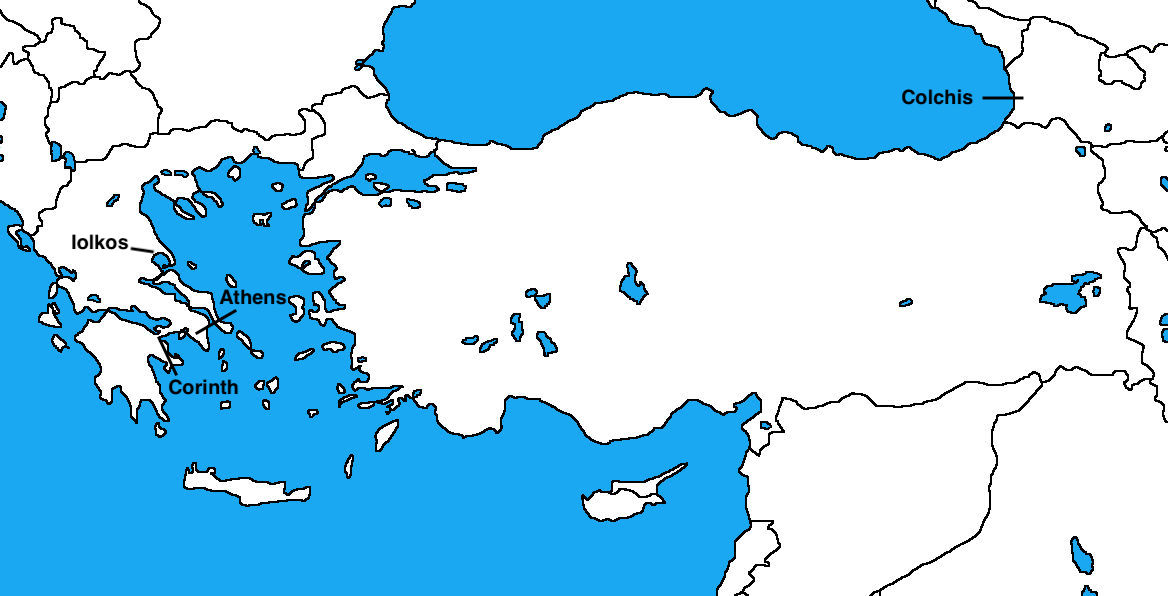Euripidean Tragedy
Originally performed in 431 BCE, the Medea is perhaps the most famous play by Euripides, one of the three great Greek tragedians (along with Sophocles and Aeschylus). Euripides was known for his innovative style, his engagement with the intellectual and philosophical debates of contemporary Athens, and the realistic emotional stakes he placed on the decisions made by the mythic figures on stage. The original audience of the play would have watched as masked male performers spoke the dialogue in meter, scenes interspersed with a singing and dancing Chorus which would have established the themes of the performance and addressed the poetic and mythic impact of the story. The Medea was staged at the Great Dionysia, a week-long festival held every spring in Athens during which three playwrights would present their work. At the end of the festival, a panel would determine the winner, and though Euripides won third place when the Medea was first performed, it is uncertain whether this was due to stiff competition or the potentially controversial interpretation of the myth as depicted.
The History of Jason & Medea
The Medea tells the story of the tragic and violent breakdown of the marriage between Jason and Medea, characters from myths already known to the Athenian audience. After Jason’s power-hungry uncle Pelias stole the throne of Iolkos from Jason’s father, King Pelias sent Jason away on a quest to find and claim the Golden Fleece. Jason led a band of heroes, called the Argonauts, on a long journey which led them to Colchis, where the king agreed to give the fleece to Jason if he accomplished a series of impossible tasks. The king’s daughter, Medea, used her magical abilities to help him, even killing her own brother, under the condition that she marry Jason and accompany him on his return voyage. She also helped him to get revenge on Pelias by tricking his daughters. After killing an old ram, she demonstrated how her magical herbs could revive and rejuvenate the animal and convinced Pelias’ daughters to try the same with their father. This time, however, Medea did not perform the necessary magic, and after King Pelias’ death, she and Jason fled to Corinth.
Euripides’ Medea
The Medea picks up with their domestic life in Corinth many years later as Jason plans on making a new politically advantageous marriage to the daughter of the Corinthian king Creon, abandoning Medea and threatening the status of their two children. Tension grows as Medea prepares for exile, ordered by Creon, lest Medea turn her magic against them. The Athenian king Aegeus offers her refuge, allowing Medea to plan her vengeance and her escape. Feigning peace with Jason, Medea poisons a robe and crown and has her children deliver it to Jason’s fiancée. But Medea’s revenge is not complete with the princess’ death and so she murders Jason’s only heirs, her own children, before escaping on a flying chariot. Though the rest of the play would have taken place on a semi-circular stage, for Medea’s final triumph, she would have emerged on a crane, called a mechane, above the stage (a staging potentially invented by Euripides and generally reserved for a divine appearance, from which the phrase deus ex machina originated).
Places Mentioned in this Post

Learn More
- For more on Euripidean innovation, see Francis Dunn’s Tragedy’s End: Closure and Innovation in Euripidean Drama.
- For more on the production of the Medea, both ancient and modern, see Michael Ewans’ Euripides’ Medea: Translation and Theatrical Commentary.
- Check out the Lib Guide created by librarians at the Community College of Philadelphia.
Audrey Wallace recently received her Ph.D. from Bryn Mawr College in Greek, Latin, and Classical Studies in 2023, where she also received her M.A. in 2017.